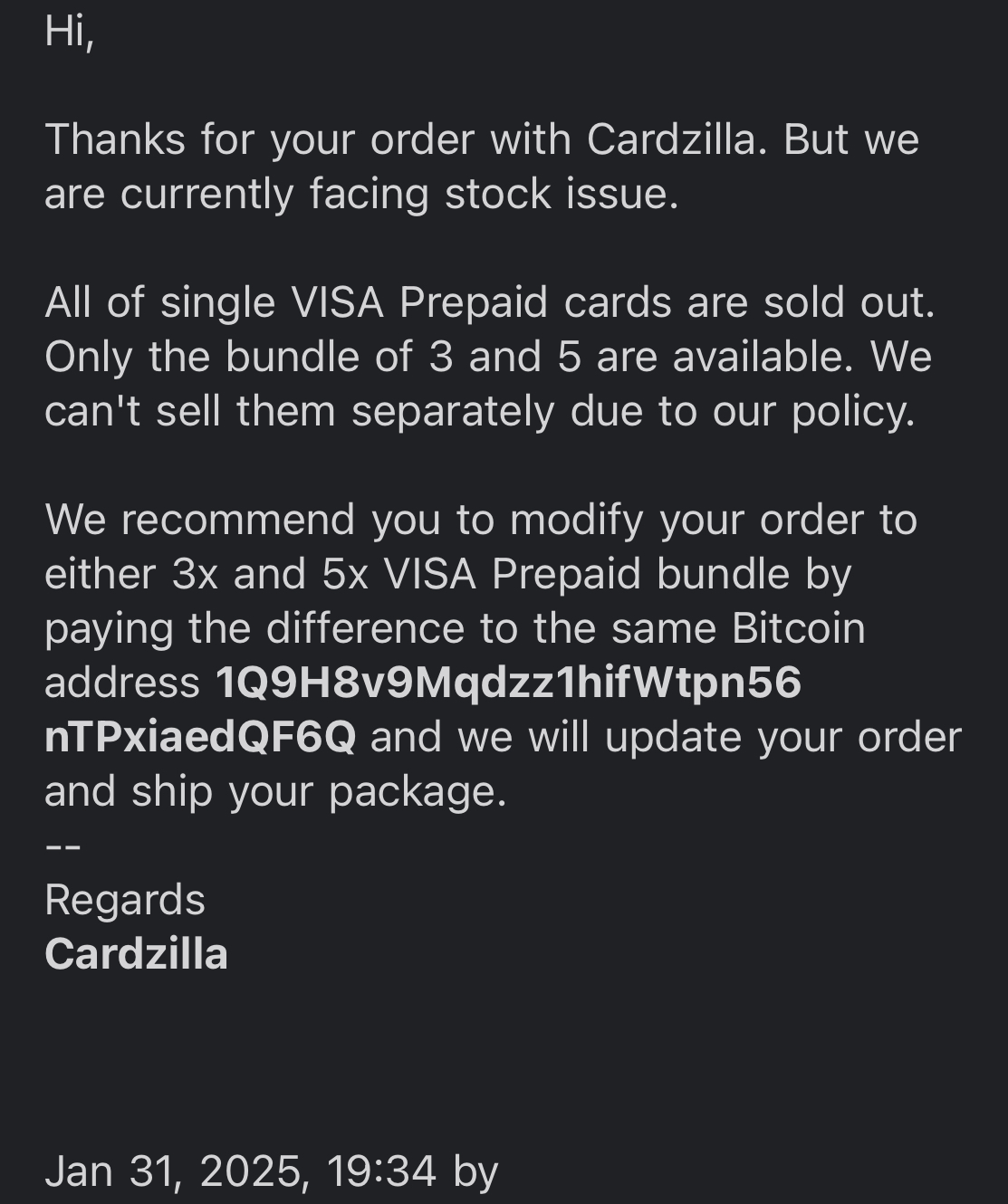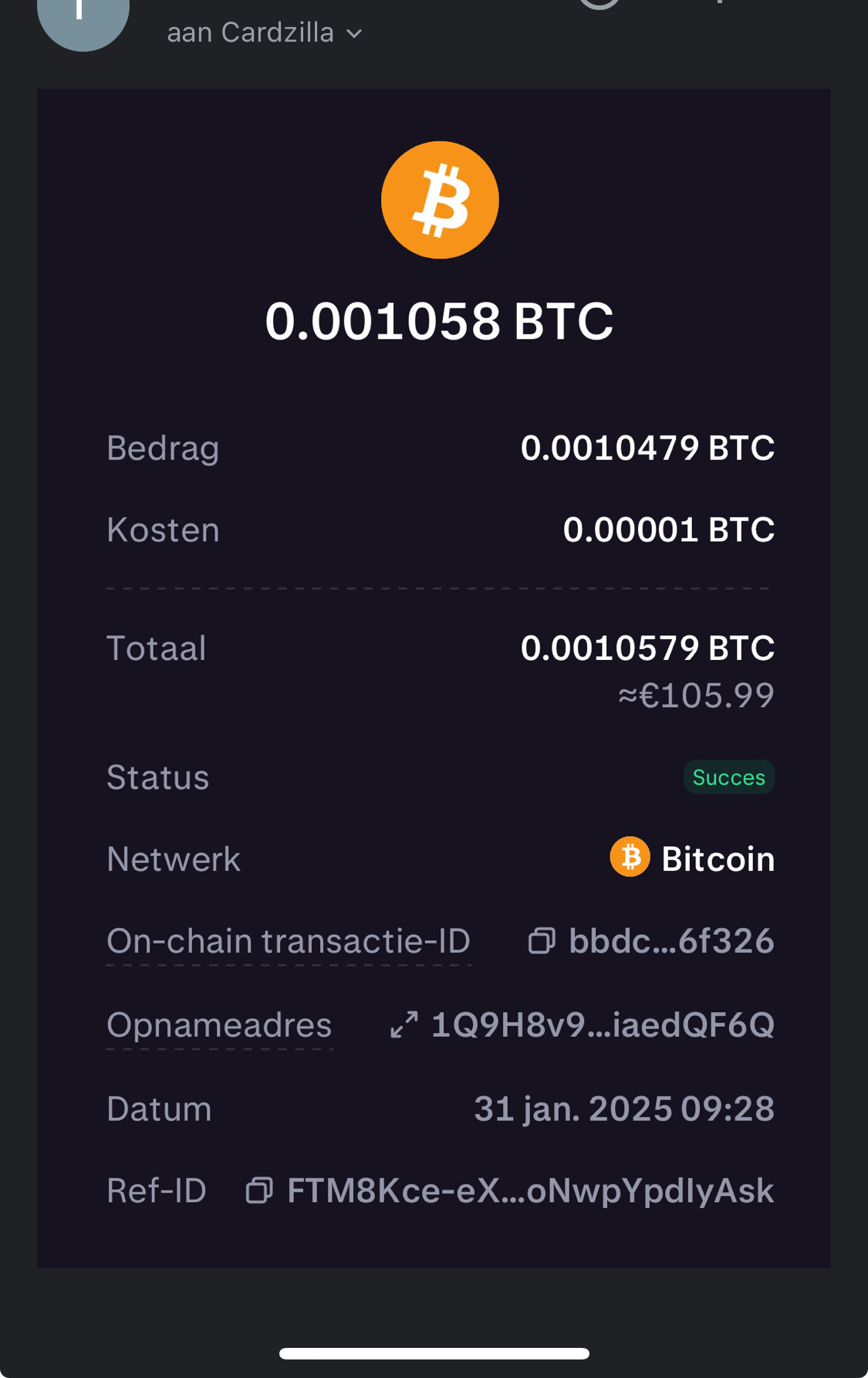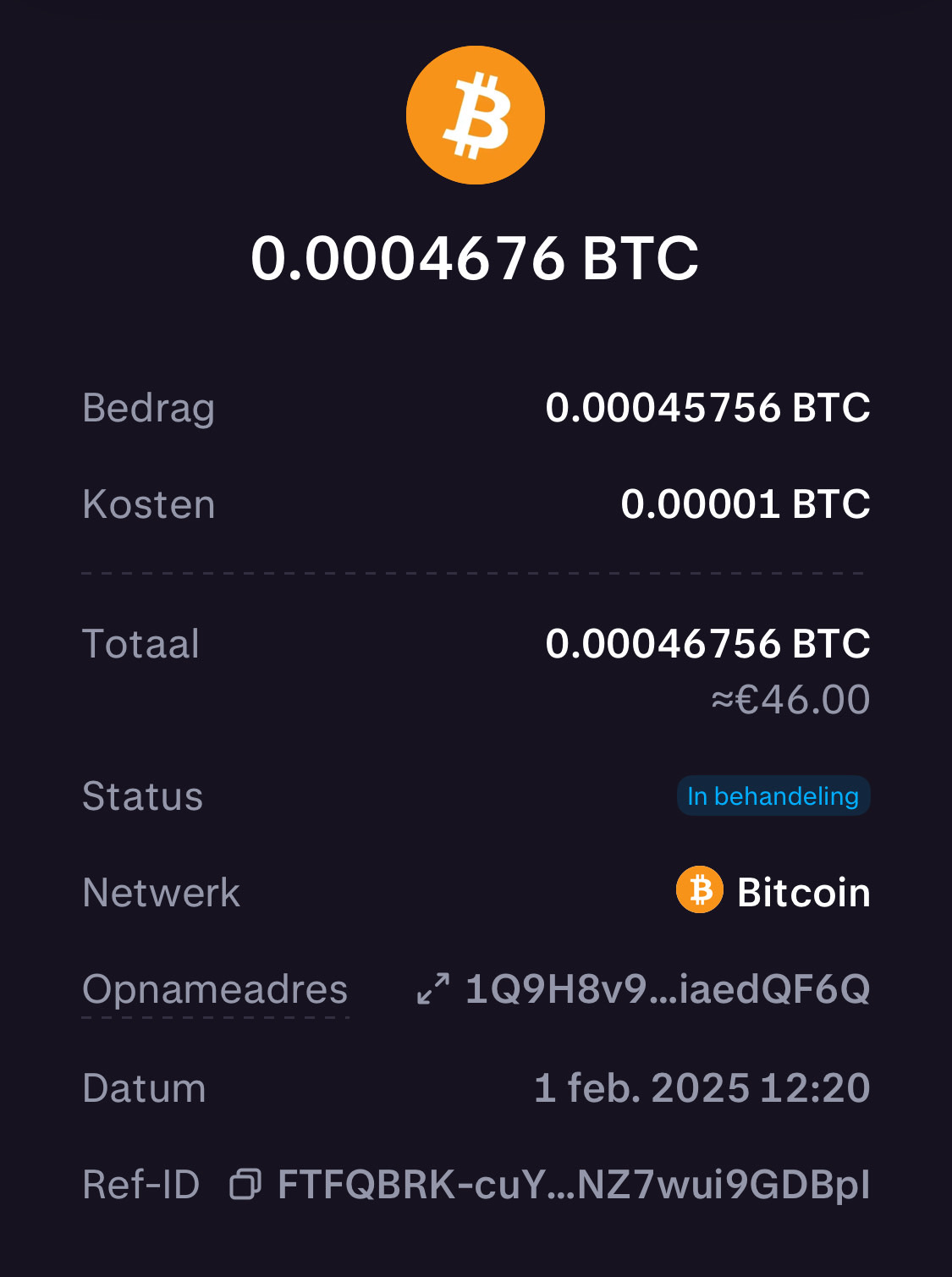Table of Contents
ToggleCardzilla – TOR Scam Report (201)
Onion Link : http://cardzilevs4j4nj6uswfwf35oxnp64yrrtazjgap2w3vgoz2pwkp6sqd.onion/
Scam Report Date : 2025-01-31
Client Scam Report Breakdown
Original Scam Report :
The client’s report describes a case of fraudulent behavior by a seller who first claimed they did not have the ordered product and then demanded additional payment before ceasing all communication. The scam began when the client placed an order and sent the agreed-upon payment. Instead of fulfilling the order, the seller falsely stated that the product was unavailable and required the client to send more money to complete the purchase. However, after the additional payment was made, the seller became unresponsive, providing no further updates or product delivery. This sequence of events suggests a bait-and-switch scam, where the seller lures the buyer in with an initial offer but later manipulates them into paying more without delivering anything.
Photos :



Definition of Key Terminology and Terms
Several important terms help clarify how this scam was executed. A bait-and-switch scam is a deceptive tactic where a seller advertises a product or service but later alters the deal under false pretenses, typically demanding additional money. In this case, the seller claimed the ordered item was unavailable, forcing the client into a forced upsell, where they were manipulated into paying extra. Unresponsive seller is another critical term, referring to a scammer who deliberately cuts off communication after receiving payment, preventing the buyer from disputing the transaction. Double-dipping fraud describes a scam where a fraudster extracts multiple payments from a victim before disappearing. Additionally, this case exemplifies non-delivery fraud, where the client pays for a product but never receives it, with no way to recover their funds.
Analysis of Scam Indicators and Prevention Strategies
This scam followed a common pattern designed to extract additional money from the victim before ultimately disappearing. One clear red flag was the sudden change in product availability—if an item is listed as available and then mysteriously becomes “out of stock” only after payment, this is often a manipulation tactic. The demand for additional funds without proof of legitimacy is another clear warning sign. The scammer likely used psychological pressure, knowing that the client had already committed money and would be more likely to send more rather than risk losing their initial payment. To prevent such scams, buyers should only transact with verified sellers on reputable platforms and should avoid additional payments unless clear, verifiable terms are provided. Using escrow services that hold funds until the product is delivered can also provide protection. Additionally, clients should remain cautious of sellers who suddenly stop communicating, as this is a strong indicator of fraud.







